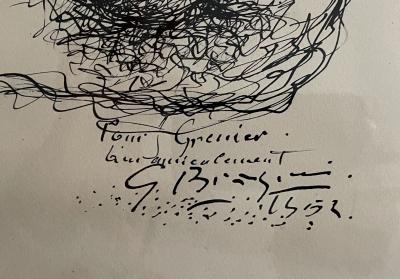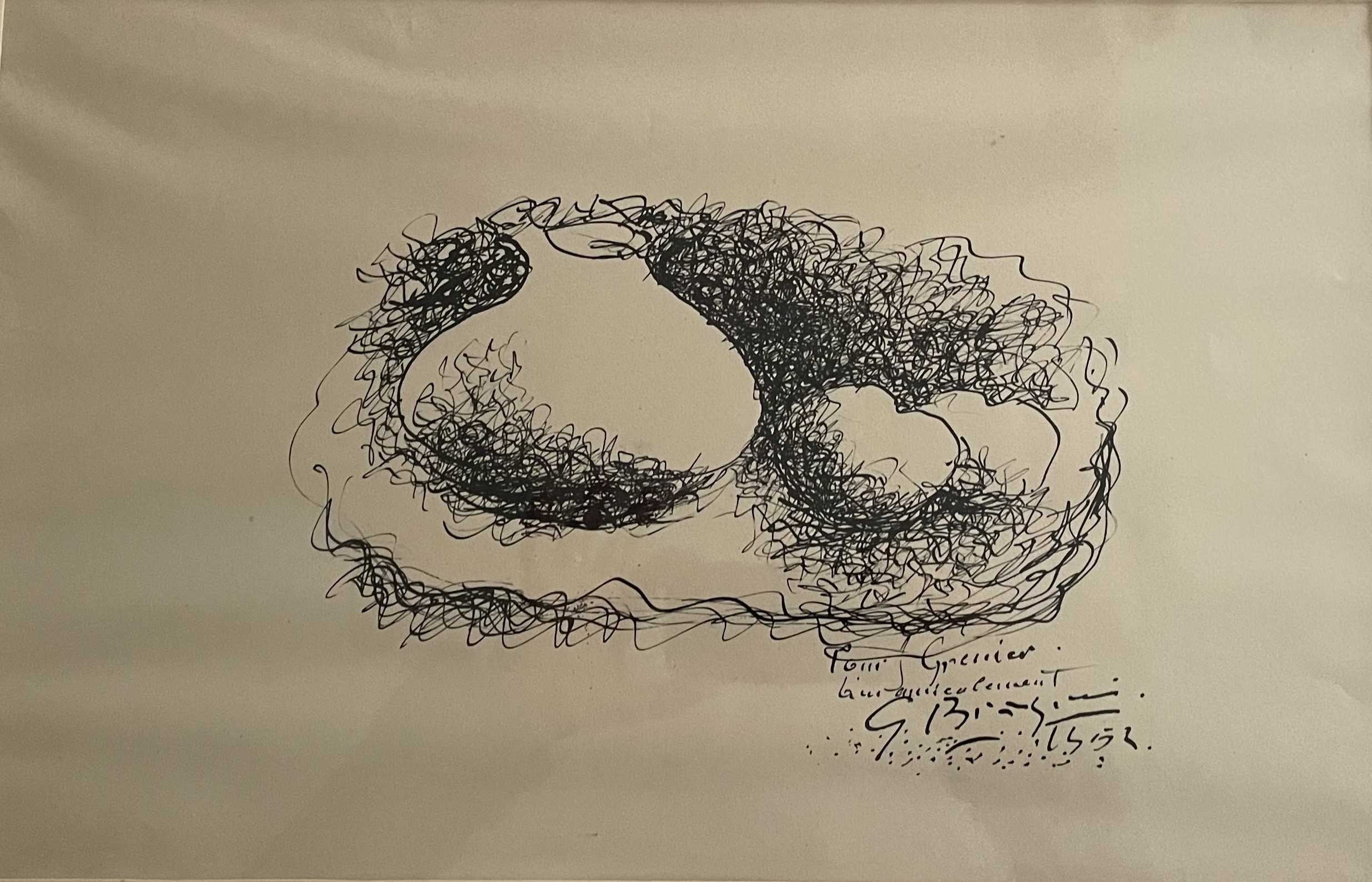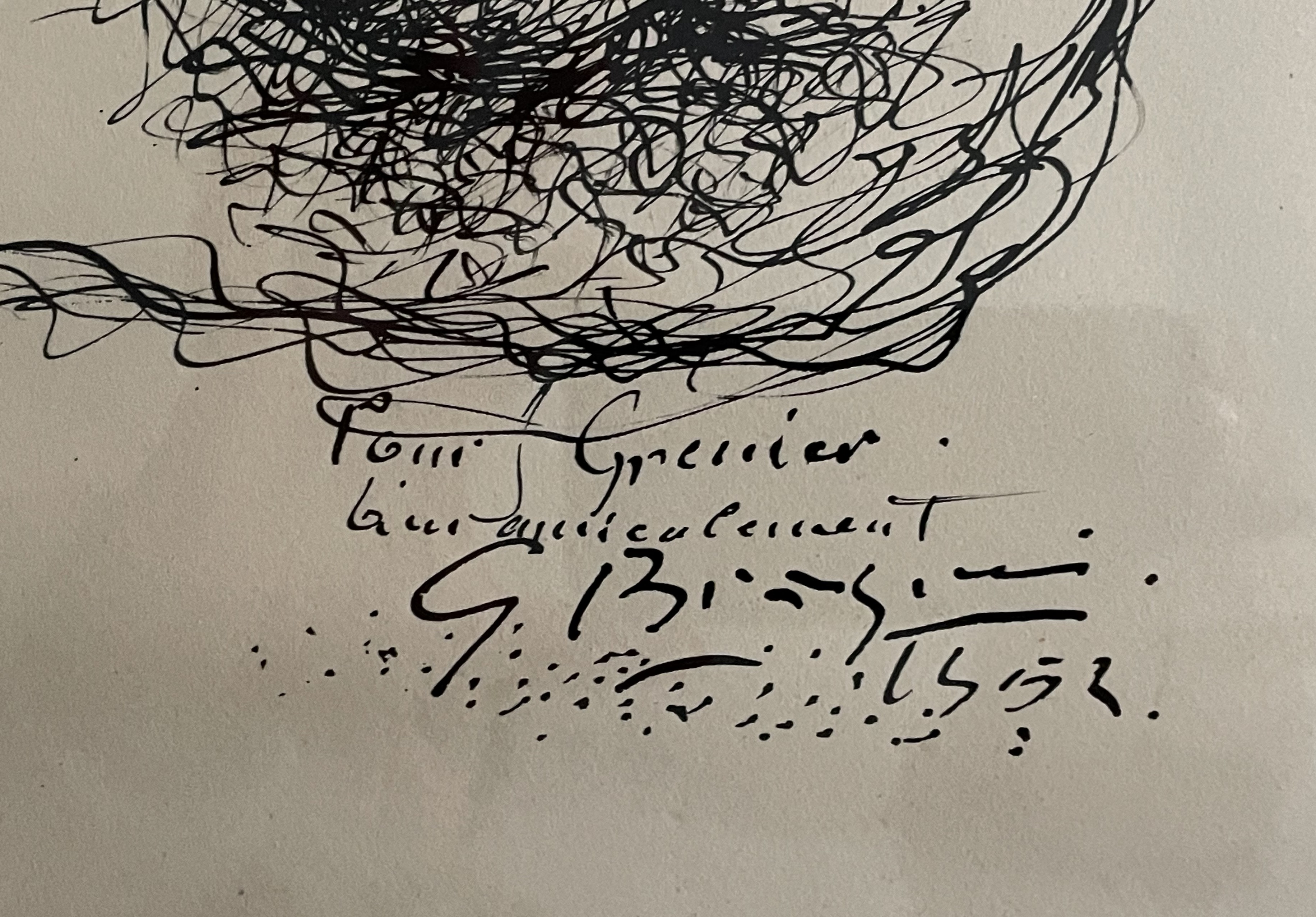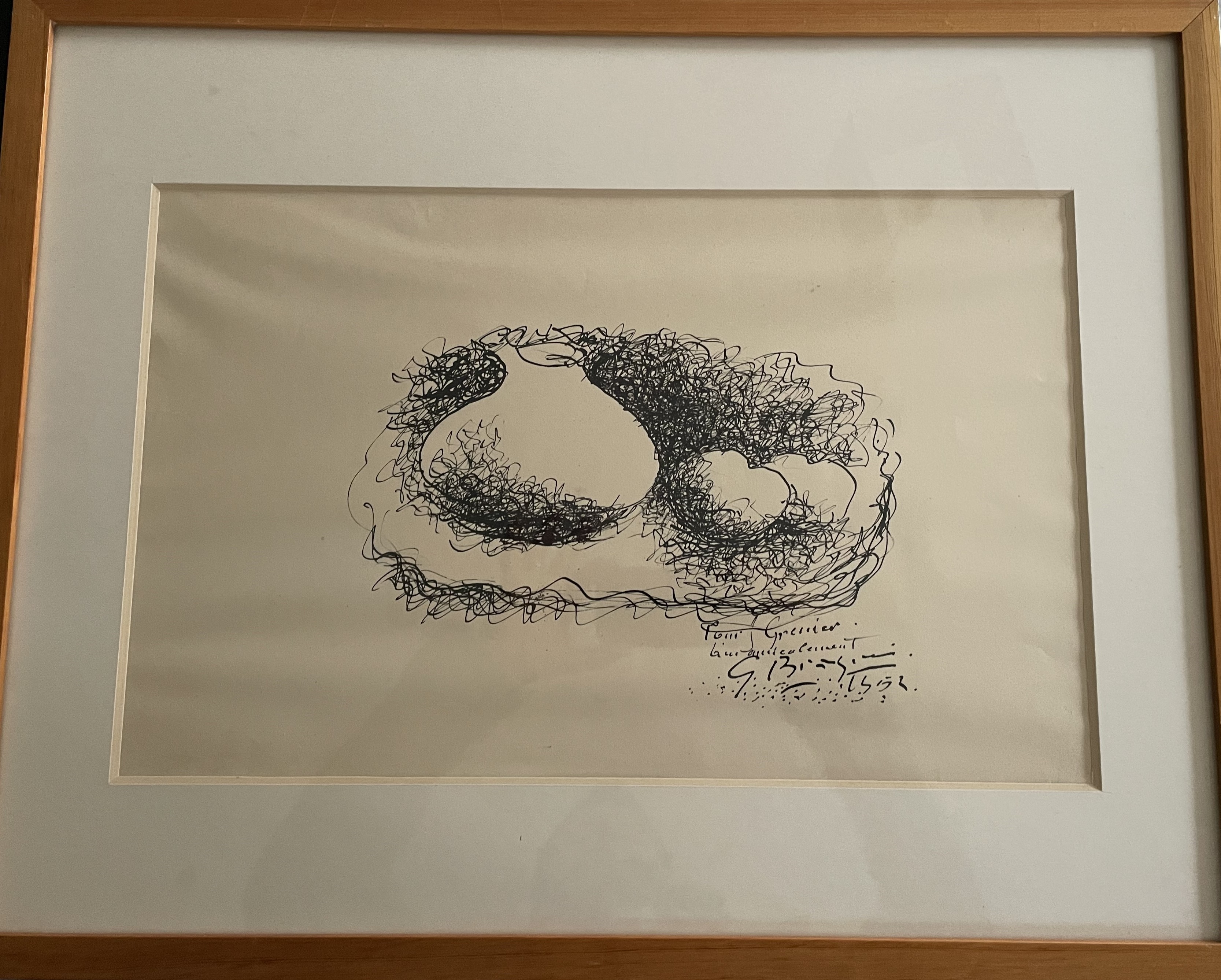Georges BRAQUE - Still life with vase and fruit, 1952 - original drawing
Georges BRAQUE (1882 - 1963), French painter
Still life with vase and fruit, 1952
Indian ink drawing on paper, 30.5 x 48.5 cm. Signed, dated (1952) and dedicated ("Pour Grenier…") under the composition.
Provenance: Jean Grenier collection
Exhibition: Jean Grenier, A look at painting 1944 - 1971, Musée des Jacobins, Morlaix, from July 6 to October 15, 1990.
Bibliography: Jean Grenier "Regard on painting 1944 - 1971", publisher Musée des Jacobins, 1990
Jean Grenier has been trained in aesthetics since his adolescence, soaking up the light of the shores of the Mediterranean. As adults, many of his friends were artists themselves, among them Max Jacob, Dubuffet and Jacques Busse. But it was above all his long collaboration and his friendship with Jean Paulhan which developed his interest in aesthetics. This collaboration naturally led him to criticism. In September 1944, his former student Albert Camus asked him to take over the artistic section of the newspaper Combat. Jean Grenier invested himself fully in it, from his meetings were born friendships with numerous painters including Debré, Estève, Soulages, Alechinsky, Atlan, and even Messsagier. He was subsequently appointed professor at Farouk 1st University in Alexandria from 1945 to 1950. In 1955, he wrote articles for L'Oeil, also collaborated for L'Express, La Nef, Preuves, the NRF, XXth Century, Behind the Mirror and The Arts Gallery. In 1962, Jean Grenier was appointed to the chair of Aesthetics and Art Science at the Sorbonne. From 1959 to 1961, he was in charge of the French Culture Hour section at RTF. It is therefore over a period which extends over more than thirty years (1937-1971) that Jean Grenier questions the artistic world. For his sections, he starts from the man in his living or working environment. And before the man his home, the workshop where he works: Picasso at the Hôtel des Grands Augustins at the Liberation of Paris, Braque in his house near Parc Montsouris, the workshop "large and clear, very lit, because it gives to the south," he explains. Braque again in a second portrait: "(…) Here he enters: he is tall, robust, with square shoulders, full of quiet strength; in a deep voice he expresses himself in long-meditated sentences, and his blue eyes follow the scope of his words in space. », further: "(…) he remained faithful to his native country. All of Braque is in there, in this loyalty, this constancy. ". This contextualization is the essential preliminary outline to approach the work, he said. (Sources: Patrick Corneau, February 1, 2004)
Dimensions :
- Height : 30,5 cm
- Width : 48,5 cm
Still life with vase and fruit, 1952
Indian ink drawing on paper, 30.5 x 48.5 cm. Signed, dated (1952) and dedicated ("Pour Grenier…") under the composition.
Provenance: Jean Grenier collection
Exhibition: Jean Grenier, A look at painting 1944 - 1971, Musée des Jacobins, Morlaix, from July 6 to October 15, 1990.
Bibliography: Jean Grenier "Regard on painting 1944 - 1971", publisher Musée des Jacobins, 1990
Jean Grenier has been trained in aesthetics since his adolescence, soaking up the light of the shores of the Mediterranean. As adults, many of his friends were artists themselves, among them Max Jacob, Dubuffet and Jacques Busse. But it was above all his long collaboration and his friendship with Jean Paulhan which developed his interest in aesthetics. This collaboration naturally led him to criticism. In September 1944, his former student Albert Camus asked him to take over the artistic section of the newspaper Combat. Jean Grenier invested himself fully in it, from his meetings were born friendships with numerous painters including Debré, Estève, Soulages, Alechinsky, Atlan, and even Messsagier. He was subsequently appointed professor at Farouk 1st University in Alexandria from 1945 to 1950. In 1955, he wrote articles for L'Oeil, also collaborated for L'Express, La Nef, Preuves, the NRF, XXth Century, Behind the Mirror and The Arts Gallery. In 1962, Jean Grenier was appointed to the chair of Aesthetics and Art Science at the Sorbonne. From 1959 to 1961, he was in charge of the French Culture Hour section at RTF. It is therefore over a period which extends over more than thirty years (1937-1971) that Jean Grenier questions the artistic world. For his sections, he starts from the man in his living or working environment. And before the man his home, the workshop where he works: Picasso at the Hôtel des Grands Augustins at the Liberation of Paris, Braque in his house near Parc Montsouris, the workshop "large and clear, very lit, because it gives to the south," he explains. Braque again in a second portrait: "(…) Here he enters: he is tall, robust, with square shoulders, full of quiet strength; in a deep voice he expresses himself in long-meditated sentences, and his blue eyes follow the scope of his words in space. », further: "(…) he remained faithful to his native country. All of Braque is in there, in this loyalty, this constancy. ". This contextualization is the essential preliminary outline to approach the work, he said. (Sources: Patrick Corneau, February 1, 2004)
Dimensions :
- Height : 30,5 cm
- Width : 48,5 cm
This description has been translated automatically. please click here Click here to display the original language FR
This item is sold by a professional art dealer who guaranties its authenticity. This item is used (second-hand)
For sale
Price :
15000 € Incl. VAT
Premium and Taxes included
Delivery France:
54.00 € incl. VAT (*)
Country prices, click on See
See more
Hotline
Please contact us for any question regarding this object. For any other inquiry, we invite you to fill the contact form.
Other items from the category « Georges Braque »
This should also please you








